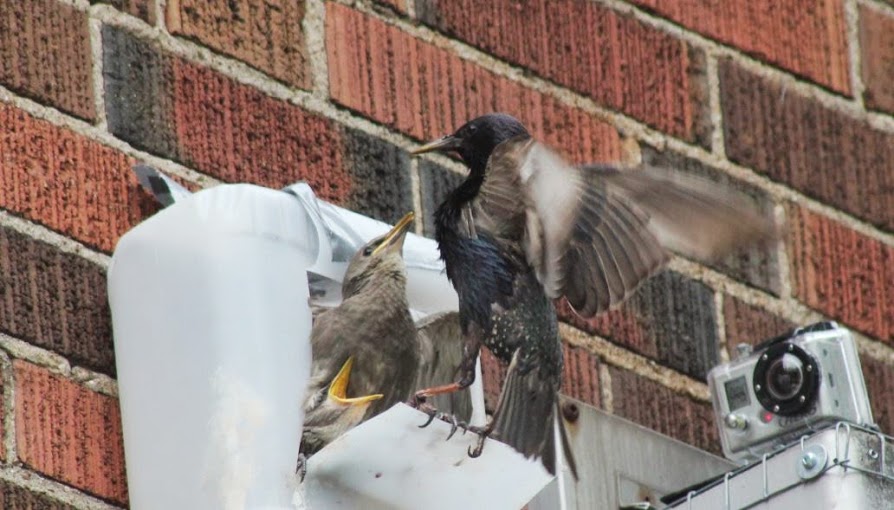Bird lovers have mixed feelings about the European Starling (Sturnus vulgaris). First introduced in the late 1800s, the starling now nests across Canada and the United States, where it is loved by some and hated by many. Aficionados celebrate its high intelligence and advanced mimicry skills; detractors claim it destroys crops and bullies other birds. Is it a villain that should be eradicated? Or is it a harmless species with a success story? Read on to decide what you think of this little bird and whether you need to call Skedaddle Wildlife North York to prevent them from invading your home.
The Bright Side
From a distance, starlings are fairly nondescript black birds that congregate in large flocks, known poetically as murmurations. On closer inspection you can discern that individuals are covered in white spots, their necks washed in shiny green and wings an iridescent purple. The combined voices in a chorus of flocking Starlings can be loud and cacophonous, with each singer contributing its own rendition of purrs, chatters, screams, and rattles. They have a talent for imitating other birds, animals, and machinery, and have been taught to whistle and even talk, like their close relative the myna bird.
It’s no wonder the American Acclimatization Society brought these beautiful European songbirds to the New World in the late 1800s. Shakespeare mentioned them, Mozart borrowed their notes, and ancient Romans interpreted their flight patterns like tea leaves in the bottom of a cup. Akin to species like cats and horses, Starlings were a part of daily life across Europe, and North Americans wanted them here, too. Two little flocks were thus released in Central Park and the rest is history.
The Down Side
Since Starlings were not historical members of North American fauna, they are known by scientists as an exotic species, and because they have spread in large numbers throughout the continent, they are also considered invasive. Just being labeled an invasive exotic is enough to make many ecologically-minded bird lovers cringe at the sight of one. To further taint their reputations, in 2004 Starlings became the third avian species ever nominated by scientists to the “100 World’s Worst” invasive species list.
Why are Starlings the black sheep of the bird world? Here are a few of the problems they cause:
- Damaging crops at a value worth upwards of $800 million per year
- Spreading diseases to poultry, pigs, and humans
- Nesting inside homes, creating unsanitary conditions
- Roosting in neighborhood trees and render sidewalks below unsafe
Even when not disturbing humans, Starlings displace native birds by usurping their nests. Tree cavities are often in short supply for species like bluebirds and woodpeckers, and starlings are known to forcibly evict them—eggs and all—from holes in trees, nesting boxes, and eaves.
The Solution
European Starlings are inherently neither good nor bad. They can be understood in Canada simply as animals who, through no fault of their own, were taken from their native home and made the best of it, or in the words of Mozart’s eulogy for his dead pet starling, they are “not bad, but frisky and bright.” Since there is no possibility of eradicating the species, the only sensible alternative is to coexist peacefully.
The best way to negotiate this treaty is by excluding the birds before they colonize residential areas. Call Skedaddle Humane Wildlife Control at 416-417-2939 to discuss nuisance Starlings. We can install professional-quality bird netting and other exclusion devices that will keep Starlings out and eliminate sanitation problems before they occur. If birds have already entered your home, we can gently remove them as well as clean up the mess they have made.



